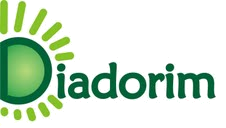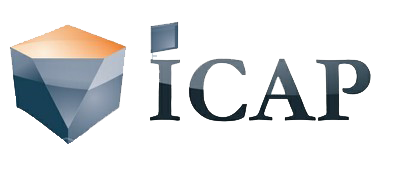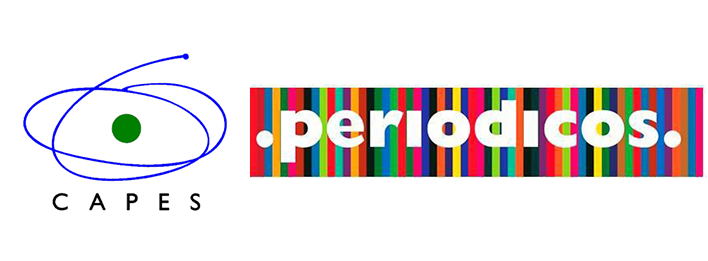Lições para o Turismo a partir do uso de eye-tracking nas pesquisas sobre o bem-estar
DOI:
https://doi.org/10.29149/mtr.v9i1.8330Palavras-chave:
bem-estar, eye-tracking, turismo, neurociênciasResumo
Eye-tracking pode ser fixo ou vestível (móvel) e tem se configurado como um instrumento relevante de pesquisa para se compreender os estímulos visuais. No contexto de pós-pandemia, os debates sobre o processo de retomada do setor de turismo aceleraram tendências já percebidas de maior procura por destinos menos massificados, mais comprometidos com a temática da sustentabilidade e mais vinculados com experiências de bem-estar e saúde, privilegiando locais com menor concentração de pessoas, notadamente ao ar livre e com maior possibilidade de contato com a natureza. Observa-se que o conhecimento neurocientífico tem elevado o turismo a um outro patamar de questionamentos, permitido inclusive um outro tipo de abordagem teórica conceitual, e de coleta, tratamento e discussões sobre dados. Portanto, o objetivo geral desta revisão sistemática da literatura (RSL) sobre o uso de eye- tracking (ET) para mensurar o tratamento do bem-estar é um passo decisivo para os avanços de estudos no turismo a partir de conhecimentos interdisciplinares. A pesquisa é exploratória, descritiva, de natureza qualitativa, sendo realizada através de consulta a três bases de dados: Scopus, Pubmed e Web of Science (WoS). É mister explicar que para efetivar a busca foram determinados descritores que somam o termo eye-tracking e de variações do termo bem-estar no idioma inglês. Ainda, foi utilizado o suporte do software de análise textual Iramuteq, que permitiu compreender tanto os termos mais recorrentes, quanto os chaves por conta da coocorrência. Foi inventariado, através de um quadro, tecnologias de eye-tracking a partir dos estudos empíricos que os utilizaram, o que facilitou verificar os prós e contras das lições apreendidas. Assim, em síntese, os resultados são organizados em sete preciosas lições compreendidas com a RSL. A expectativa é que essas lições possam contribuir para futuras pesquisas na área, notadamente as experimentais sobre turismo e bem-estar, utilizando eye-tracking em alguma de suas etapas.
Referências
Andreu, M., Font-Barnet, A., & Roca, M. (2021) Wellness Tourism—New Challenges and Opportunities for Tourism in Salou. Sustainability, 13, 8246. https://doi.org/10.3390/su13158246
Bear, M.F.; Connors, B.W.; Paradiso, M.A. (2017). Neurociências: Desvendando o sistema nervoso. 4ed. Porto Alegre: Artmed.
Browatzki B., Bülthoff H. H., Chuang L. L. (2014). A comparison of geometric- and regression-based mobile gaze-tracking. Frontiers in Human Neuroscience, 8 10.3389/fnhum.2014.00200
Cerf, M. (2017). Methods. In: Cerf, M.; Garcia-Garcia, M. Consumer Neuroscience.
MIT Press. 63-102.
Colombo, B. et al. Procedia Manufacturing 3 ( 2015 ) 2259 – 2266 2263 a
Criado, A.R.; Paul, J. (2020). The art of writing literature review: What do we know and what do we need to know? International Business Review, 29 (4). 101717, https://doi.org/10.1016/j.ibusrev.2020.101717.
Grilli, G., Mohan, G., & Curtis, J. (2020). Public park attributes, park visits, and associated health status. Landscape and urban planning, 199, 103814. https://doi.org/10.1016/j.landurbplan.2020.103814
Lea, R.G. et al. (2018). Trait emotional intelligence and attentional bias for positive emotion: An eye tracking study. Personality and Individual Differences, 128. 88-93. https://doi.org/10.1016/j.paid.2018.02.017.
Lemieux, C., Eagles, P., Slocombe, D.; Doherty, S., Elliot, S. & Mock, S. (2012) Human health and well-being motivations and benefits associated with protected area experiences: An opportunity for transforming policy and management in Canada. Parks, 18(1), 71–85.
Lin, B., Fuller, R., Bush, R., Gaston, K., & Shanahan, D. (2013). Opportunity or orientation? Who uses urban parks and why. PLoS one, (9)1, e87422. https://doi.org/10.1016/j.jenvman.2016.12.058
Londe, P., & Mendes, P. (2016). Qualidade Ambiental Das Áreas Verdes Urbanas Na Promoção Da Saúde: O Caso Do Parque Municipal Do Mocambo Em Patos De Minas/MG. Hygeia-Revista Brasileira de Geografia Médica e da Saúde, (12)22, 177-196.
Maller, C., Henderson-Wilson, C., Pryor, L., Prosser, L. & Moore, M. The health benefits of contact with nature in a park context – A review of relevant literature (2nd ed.). Deakin University – School of Health and Social Development, Faculty of Health, Medicine, Nursing and Behavioural Sciences, 2008.
Mayer, V.F. ; Fraga, C.C.L.; Silva, L.C.S. (2021). Contributions of Neurosciences to Studies of Well-Being in Tourism. Advances in Hospitality, Tourism, and the Services Industry. 1ed.: IGI Global, 2021, v. , p. 108-128.
Michael, I. et al. (2019) "A study of unconscious emotional and cognitive responses to tourism images using a neuroscience method", Journal of Islamic Marketing, https://doi.org/10.1108/JIMA-09-2017-0098
Moyle, B.D.; Moyle, C.; Bec, A. & Scott, N. (2019) The next frontier in tourism emotion research, Current Issues in Tourism, 22:12, 1393-1399. 10.1080/13683500.2017.1388770
Pessot, E.; Spoladore, D.; Zangiacomi, A.; Sacco, M. Natural Resources in Health Tourism: A Systematic Literature Review. Sustainability, 13, 2661, 2021. https://doi.org/10.3390/su13052661
Prisma (2009). Prima 2009 - Flow Diagram. Disponível em Acessado em: 01 mar. 2023.
Portal de Periódicos Capes (2023). Disponível em Acesso em: 19 abr. 2023.
Romagosa, F.,; Eagles, P., & Lemieux, C. J. From the inside out to the outside in: Exploring the role of parks and Protected áreas as providers of human health and well-being. Journal of Outdoor Recreation and Tourism, 10, 70–77, 2015. https://doi.org/10.1016/j.jort.2015.06.009
Salviati, M.E. (2017). Manual do Aplicativo Iramuteq. Disponível em
<http://www.iramuteq.org/documentation/fichiers/manual-do-aplicativo-iramuteq-par-maria- elisabeth-salviati> Acesso em: 20 abr. 2023.
Sancho-Pivoto, A. S.; Raimundo, S. As contribuições da visitação em parques para a saúde e bem-estar. Revista Brasileira de Pesquisa em Turismo, São Paulo, 16, e-2546, 2022. https:// doi.org/10.7784/rbtur.v16.2546
Scott, N. (2020), "Cognitive psychology and tourism – surfing the “cognitive wave”: a perspective article", Tourism Review, 75 (1), 49-51. https://doi.org/10.1108/TR-06-2019-0217
Tham, A., Schaffer, V., & Sinay, L. (2021). The ethics of experimental research employing intrusive technologies in tourism: A collaborative ethnography perspective. Tourism and Hospitality Research, 21(3), 303–316. https://doi.org/10.1177/1467358421993893
Tobii. Eye tracker calibration. (2023), Mar., 10. Disponível em
<https://connect.tobii.com/s/article/eye-tracker-calibration?language=en_US> Acesso em: 01 mai. 2023.
Tosun, C.; Ozdemir, S.; Cubuk, F. (2016). Usage of Neuro-tourism methods in hotel preferences of the consumers. The 2016 WEI International Academic Conference Proceedings. Disponível em <https://www.westeastinstitute.com/wp-content/uploads/2016/09/Cevat- Tosun-Seda-Ozdemir-Fatma-Cubuk.pdf> Acessado em: 01 mai. 2023.
Wang, D., Brown, G., & Liu, Y. (2015). The physical and non-physical factors that influence perceived access to urban parks. Landscape and urban planning, 133, 53-66. https://doi.org/10.1016/j.landurbplan.2014.09.007
World Tourism Organization and European Travel Commission. (2018) Exploring Health Tourism. UNWTO eLibrary.
Zheng, T.;Glock, C.H. Grosse, E.H. (2022). Opportunities for using eye tracking technology in manufacturing and logistics: Systematic literature review and research agenda. Computers & Industrial Engineering, 171, 108444, https://doi.org/10.1016/j.cie.2
Downloads
Publicado
Como Citar
Edição
Seção
Licença
Copyright (c) 2024 ALTAIR SANCHO PIVOTO, Carla Fraga

Este trabalho está licenciado sob uma licença Creative Commons Attribution 4.0 International License.
Autores que publicam nesta revista concordam com os seguintes termos:
- Autores mantém os direitos autorais e concedem à revista, sem ônus para a mesma, o direito de primeira publicação, com o trabalho simultaneamente licenciado sob a Licença Creative Commons Attribution que permite o compartilhamento do trabalho com reconhecimento da autoria e publicação inicial nesta revista
- Autores têm autorização para assumir contratos adicionais separadamente, para distribuição não-exclusiva da versão do trabalho publicada nesta revista (ex.: publicar em repositório institucional ou como capítulo de livro), com reconhecimento de autoria e publicação inicial nesta revista.
- Autores assumem exclusiva responsabilidade pelas suas opiniões emitidas nos trabalhos publicados nesta revista
















